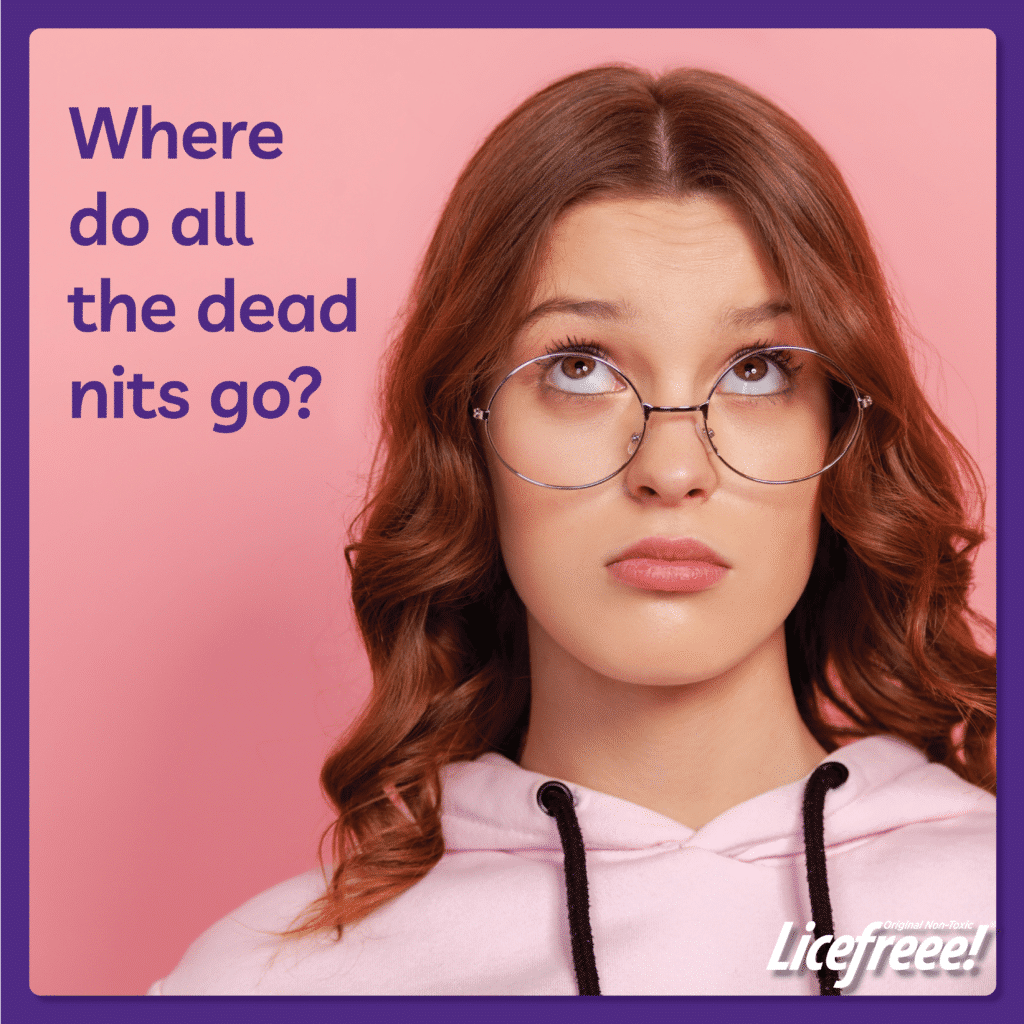
If you’re the recent victim of a head lice infestation, chances are you’re wondering where did all of those dead nits go? Just as you clean your home and linens following a lice infestation, you’ll also want to be extra attentive to your scalp to prevent future misdiagnosis or reinfestations.
We’ve compiled a quick and easy guide to help you rid your hair and head of these pesky parasites once and for all!
How Long Can Dead Nits Stay in Hair?
Dead nits can remain in the hair until they are physically removed. They may remain attached to the hair shaft until it naturally sheds or until they are manually extracted. While dead nits are no longer viable and cannot hatch, their presence can cause discomfort and confusion.
The Consequences of Leaving Dead Nits in Your Hair:
Following treatment of head lice with Licefreee Spray, you’ll want to cleanse your head for several reasons thoroughly. While treatments kill the lice and nits living on your scalp, you’ll still want to clean your head and hair to ensure the dead nits and lice are totally removed.
Leaving dead nits in your hair can pose several problems, especially among school-age children.
- Misdiagnosis: Dead nits can be mistaken for live eggs, leading to unnecessary worry and ongoing treatment efforts. Accurate identification of live versus dead nits is crucial for effective lice management.
- Continued Itching: Dead nits can cause persistent itching and discomfort. Even though they are no longer viable, their presence can still trigger an allergic reaction and result in ongoing itching.
- Risk of Reinfestation: Dead nits left in the hair can be a potential reinfestation source. If any viable nits remain or if there is continued exposure to live lice, the infestation can reoccur.
How to Get Dead Nits Out of Your Hair:
To effectively remove nits from your hair, consider the following steps:
Wet Combing Method
The wet combing method is a fool-proof way to remove dead nits from the hair. Simply begin by wetting the hair with a conditioner or detangling spray. Using the Licefreee NitDuo, comb through small sections of the hair, starting at the scalp and working your way to the ends. Rinse the comb under warm water after each pass to remove any nits or lice. You should repeat this method every few days to ensure thorough removal of nits following an infestation.
Manual Nit Removal
If you are dealing with stubborn nits that are difficult to remove with a comb, you may need to resort to tweezers to carefully extract them from individual hair strands. With this method, be careful and take your time to avoid hair breakage and scalp irritation.
3. Regular Inspection:
Following a lice infestation, you’ll want to perform regular head checks to monitor for any new nits or signs of live lice. To do this, use the NitDuo and separate hair into sections. Comb slowly from the scalp to the end of the hair and inspect for lice or nits. If you confirm live lice, you will need to begin treatment all over again.
Treating lice is not the final step in your infestation journey. Leaving dead nits in your hair can lead to misdiagnosis, continued itching, and re-infestation risk. To effectively remove nits, employ wet combing and manual nit removal methods. Regular inspections and meticulous nit removal are essential for thorough eradication. Remember that dead nits can persist in the hair until physically removed. You can successfully eliminate nits and ensure a lice-free environment by understanding the consequences of neglecting dead nits and following proper removal techniques.
